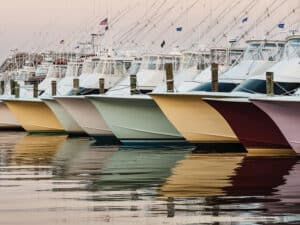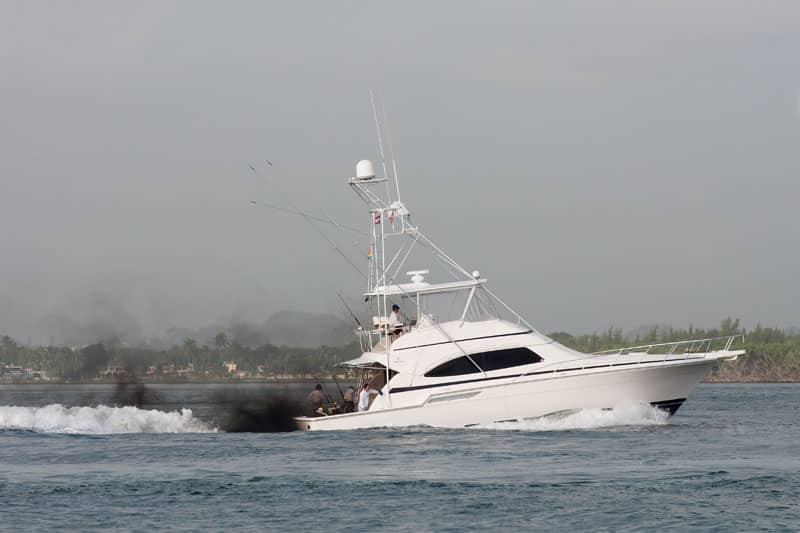
There are some really neat experienced boats that with a little love — and usually a bunch of money — stand ready to be reborn. A boat’s engines often represent the largest area of investment, so a refit might require either a full re-power, a remove-rebuild reinstall, or an in-hull rebuild. I’ve done all three, in addition to several other variations on different boats, all with varying circumstances. I learned a lot from each one: No two are alike, and each presents its own set of challenges.
Invariably, preconceived expectations must be addressed to increase the odds of a favorable outcome. Pertinent ingredients for success include honest, attainable, and reasonable performance goals; proper planning; skillful and practical execution; and a sound platform with which to work. Quite often, a lack of performance success comes from what I call “answer shoppers”: folks who ask everyone they know questions until they hear the response they want to hear, even though those answers might not reflect reality. Then they try to explain to the experts how their solution is possible when it’s probably not, simply because someone told them it is. Many times, the owner contemplating the re-power gets sold a bill of goods regarding speed, sometimes fuel economy and, naturally, price.
Speed is King
Speed seems to be the button that salespeople push hardest. Salespeople create an expectation, and the owner takes that info as gospel. In the real world, speed is probably the last criterion that should be considered. More-pressing considerations include: Will the engines fit without major fabrication or alterations? What systems will the total engine change affect? Can the same running gear and transmissions be used with the new horsepower? What are the honest performance scenarios?
Once potential scenarios become exposed and considered and a plan for addressing them has been made, discuss and investigate the potential hidden gremlins that always pop up in a re-power. I call them the “While we’re here …” things. Since you don’t often have the engines torn down or removed, you have a prime opportunity to address engine-room issues and make improvements. Reinforcing stringers, if necessary, to handle more horsepower or weight, and inspecting for damage and inoperable equipment are just a few of the long list of improvements, either necessary or wish list, that can be done during the re-power.
In addition, you can improve the appearance of the engine room with a nice paint job and by reorganizing things. Hard-to-reach equipment like engine-room fans and lights becomes easy to service or replace, wiring and plumbing can be checked, limber holes can be cleaned, through-hull valves can be serviced, bonding system connections can be cleaned and checked — the list can go on almost forever. At a minimum, the space should be thoroughly cleaned and degreased. Any unused, nonworking or antiquated equipment should be removed, and either replaced with current updated product or deleted.
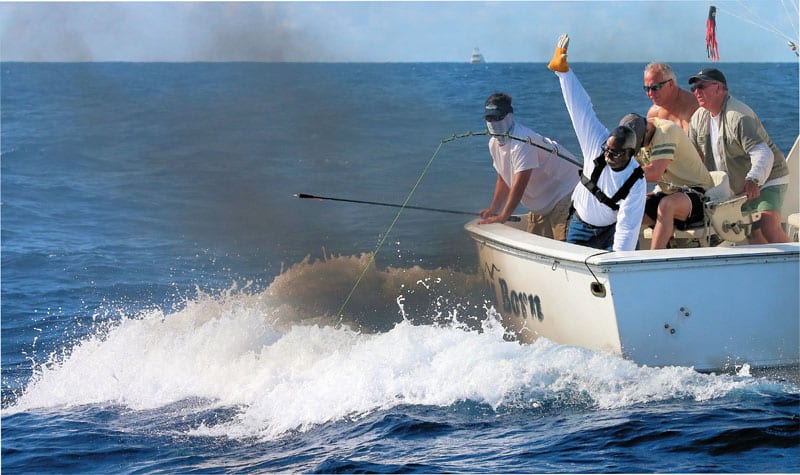
New or Reconditioned?
Two types of re-powers are available: First, manufacturers like Cummins have a remanufactured engine program as an option. Naturally, lower cost figures into this equation, and we used this option to do an exact swap on a pair of 370 hp B-Series Cummins engines in a 38-foot Knowles a few years ago, a relatively easy job. These ReCon engines enabled us to disconnect, unbolt, remove and go in with a mirror-image pair of fresh engines without needing to make revisions to hardware or mounts, and we did the change-out in a short, one-week time frame.
The ReCons will give your boat more power, better efficiency and cleaner emissions — all pluses greatly improving your boat and giving you the ability to sell it with fresh power down the road should you choose to. Cummins ReCon engines come with all the options needed, including the main engine harness, harness extensions, exhaust elbows, vibration isolators, new transmissions and air cleaners, which on the Quantum engines include Walker Airseps.
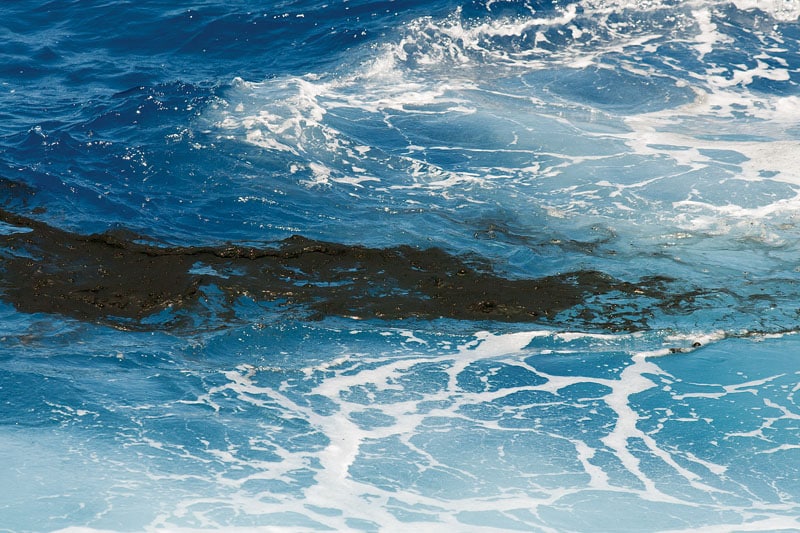
Alternatives
Many people opt to rebuild their current engines in the boat instead of re-powering due to costs and time constraints. It’s easy to understand why: Unless the boatbuilder has installed removable engine hatches so that mechanics can remove salon furniture and open up the engine space for easy, open access, you’re adding a significant chunk of labor hours to the overall job of removing tired power plants. Working in a restricted space is tough, and engine parts are big and heavy. The more obstructed the mechanics are, the longer the job will take, which increases the cost. This is also true of routine service and repairs.
Having the ability to set up A-frames to remove heads saves time and stress on the rebuild crew. While the mechanics are doing their thing, your crew can address other areas and significantly clean the engine space while it is opened up. Some of this work can be done after mechanic hours to keep the job flowing and not to interfere with the physical rebuild progress.
The next level involves completely removing the engines to do a rebuild on the floor from the inside out. We once did a full engine-room redo on our 45-foot Rybovich and removed the set of 903VTA Cummins in the boat to work on the stringers, bulkheads, and bottom, as well as to upgrade the engines and give them a refresher so we had more horsepower moving forward.
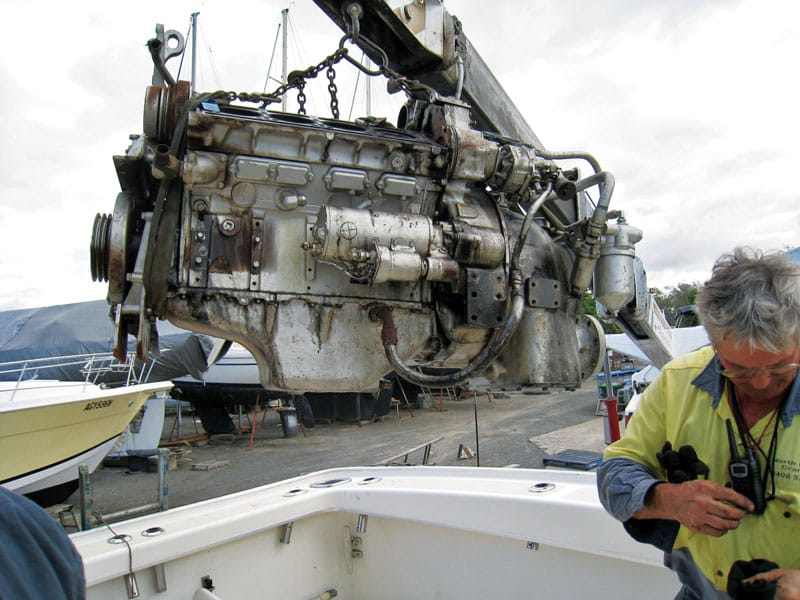
Secrets Revealed
The total tear-down of the engines revealed that, at some point in the boat’s life, someone installed the wrong camshaft in one of the engines. No wonder we were experiencing the things we were. We found this wrong-part issue because we had the factory engine manual, and we checked every part number as they came off and out of the engines. Taking the time to be sure that everything was factory approved paid huge dividends.
With the engines on the floor, we had a chance to upgrade and blueprint the turbos for more efficiency, upgrade other parts from factory revisions, change oil and fuel coolers, water pumps, hoses, belts and all internal parts, as well as clean and paint the engines prior to reinstallation. With the engines out of a boat, the entire engine room is exposed. Every detail and system can be tweaked, cleaned and organized — and rebuilt, if necessary. This is a prime time to evaluate and upgrade every system, mount, valve, pump, switch, light fixture, whatever, “While we’re here …”
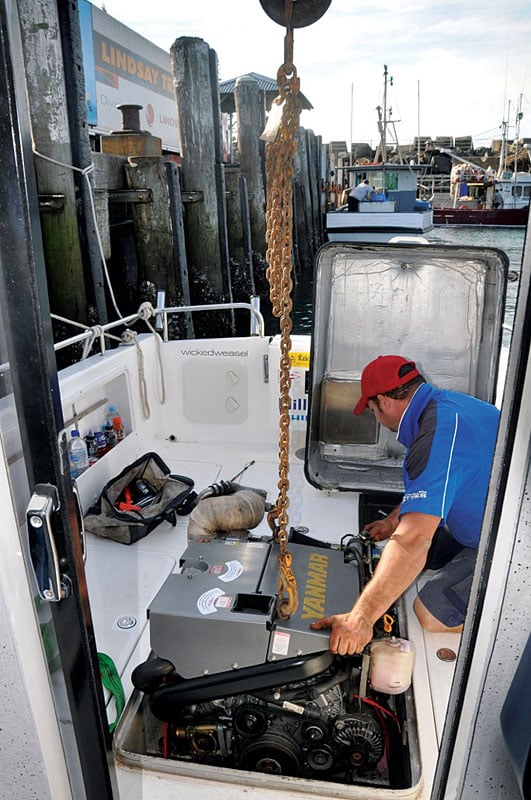
The Most Benefits
A full engine replacement is the purest form of re-powering. This scenario offers many benefits for the owner, including full manufacturer warranty as well as the option to purchase extended warranty coverage. However, the full new-engine re-power must benefit the boat as well. Some boats do not justify the cost of a new-engine re-power; knowing this and understanding the added value to the boat is important in the decision-making process.
The new engines could be worth more than the boat being re-powered, in which case a rebuild is probably more prudent. The cost of high-horsepower engines for boats over 65 feet can reach upward of 1 million dollars or more for the pair. The boat you are re-powering needs to be worth the cost and effort to re-power it. It is also probable that the boat’s value will not match the full cost of the engines and the work done to get them in just because you spend the money to re-power them.
But as parts for older engines become more scarce and the lead times for getting them increase, which keeps your boat inoperable, the benefit of zero-hour clean-burning engines becomes more attractive, especially in the 35- to 60-foot range. Volvo, MTU, Caterpillar, MAN, Cummins and Yanmar all have excellent power plants with good track records for reliable service, with notable horsepower-to-weight ratios. With each manufacturer having solid replacement options, you most likely have the ability to do a straight footprint swap.
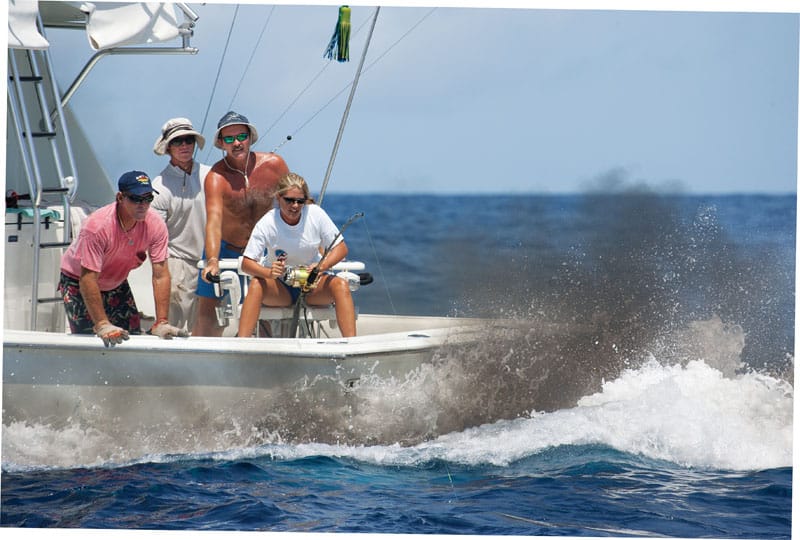
Match the Footprint
When contemplating a full re-power, try to replace what you take out with a similar size and footprint package. Doing so could reduce the amount of alterations or fabrication necessitated by making wholesale changes from manufacturers and dated product, while increasing horsepower. For instance, if you are replacing a pair of old Detroit Diesel two-stroke diesels, some substantial adjustments will probably be necessary. The weight savings alone inherent in such a re-powering scenario provides a huge benefit. In some cases, when removing old power and installing modern engines, you can realize a weight savings over 1.5 tons. Changing the footprint of the engine and gear requires making adjustments, sometimes large ones, to engine mounts, stringers, raw water and fuel feeds, electrical runs, and possibly even shaft lengths and/or diameters.
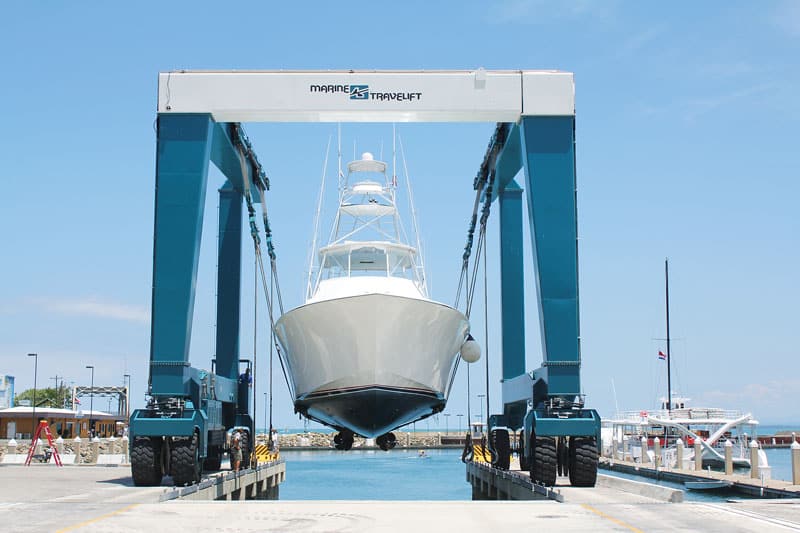
Those are just a few of the potential alterations that could be required, along with instrument changes at the helm, user-interface readouts and the like. Manufacturers do not use a standard-size readout, so any change will require carpentry, but a good carpenter can integrate the new items without running up the national debt, while making them readable and easily accessible.
Getting the old engines out of the boat and the new ones in represents a big job and needs to be properly planned. It’s always easier and safer to do this job with the boat on the hard. Doing so in the water can be dangerous; when you lift the old engine off its mounts, the boat will list to the side with the weight. If the other engine is still in the boat, it can be a fairly steep list. Also, the boat tends to move in the slip, even when tied as tightly as possible. There is still play, and that makes the job harder — and certainly more stressful. An experienced yard will have the right equipment to pull the engines, hopefully without having to cut bulkheads, cut out floors or remove windows, all possibilities in any re-power.
Making the Decision
The bottom line? If you have a tired set of smoky engines, and your fuel economy leaves something to be desired but you don’t want to shell out for a new boat, you can re-power your old vessel and improve the boat, dramatically in some cases. You need to be honest with yourself about whether the boat has the value to make a re-power a practical decision or if that’s even important to you. Teaming up with the right re-power team, selecting the right product for your boat, finding the right folks to update your engine space prior to the installation, and then installing them will make your re-power go more smoothly and likely yield improved results.
As with any major project, performing the due diligence while planning for improvements along the way, and understanding the process prior to pulling the trigger will make the experience pleasant and give your boat a major upgrade that you will enjoy for many years.
Casa Vieja Re-Powers with Cummins
Cummins Inc. recently inked a deal to re-power two of the classic boats fishing daily out of Casa Vieja Lodge* in Guatemala: Release, a 37-foot Merritt, and Makaira, a 37-foot Rybovich. These boats will receive a pair of new Cummins QSB6.7 engines, making Casa Vieja Lodge’s entire six-boat fleet Cummins-powered.
“With the way the Cummins engines have performed in the rest of our boats and the support we get from the company, there was no question where we wanted to go to get engines for Makaira,” said Capt. Dave Salazar, Casa Vieja Lodge’s owner. “The new QSB6.7, at 380 hp, was the perfect fit and will give us the performance we can depend on.”
The QSB6.7 produces up to 550 hp and meets stringent marine emissions regulations, including the EPA’s Tier 3 standards. The QSB6.7 offers more torque, better performance, improved acceleration, reduced noise and reduced vibration over the well-regarded Cummins QSB5.9, all without sacrificing fuel economy.
The QSB6.7 engines used in these two re-powers are the latest from the Cummins B Series, with over 10 million B Series engines produced and used around the world. Cummins offers both new and ReCon engines for marine refits, with new Cummins engines supported by a six-year/3,000-hour limited warranty. ReCon engines come with a two-year/2,000-hour warranty. Every ReCon engine has been completely disassembled down to the last nut and bolt, and thoroughly cleaned, inspected and restored to its original factory specifications. Critical parts such as rings, bearings, seals and gaskets are replaced with new genuine Cummins parts. After final assembly, computerized engine test cells ensure like-new performance.



